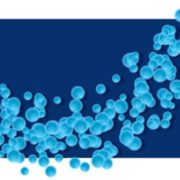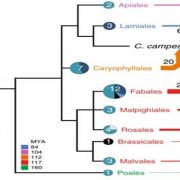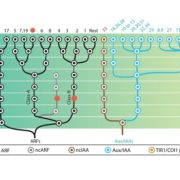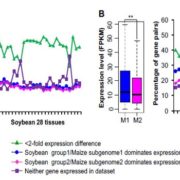Evolution and diversification of the plant gibberellin receptor GID1 (PNAS)
 Giberellins (GA) are plant hormones that have diverse role in plant growth and development. Although many GAs have been identified, only few of them show functional activity in plants. GAs are perceived by the GID1 receptor, which is widespread in vascular plants and structuraly similar to carboxylesterases (CXEs). Yoshida et al. examined the evolutionary establishment of GID1 across the vascular plants. To examine the role of conserved residues, null gid1-4 mutants in rice that have severe growth defects were complemented with GID1 versions in which the conserved amino acids interacting with biologically active GA4 were substituted by alanine. The residues responsible for recognition of the C6-COOH group, non-polar interactions and adjustment of the lid structure, which interacts with DELLA proteins, were prerequisite for GID1 functionality. Interestingly, GID1 is encoded by one gene in the majority of monocots, whereas most dicot species have two types of GID1, A and B. GID1 B-type appears to be under purifying selection targeting the loop region, suggesting neofunctionalization. The B-type GID1s are not only hypersensitive to active GA, but also predominantly expressed in roots in most of the species studied. Those results suggest that hypersentive B-type GID allows for root growth, which is more responsive to GA than the shoot, providing an evolutionary advantage in adverse environmental conditions. (Summary by Magdalena Julkowska) Proc. Natl. Acad. Sci. USA 10.1073/pnas.1806040115
Giberellins (GA) are plant hormones that have diverse role in plant growth and development. Although many GAs have been identified, only few of them show functional activity in plants. GAs are perceived by the GID1 receptor, which is widespread in vascular plants and structuraly similar to carboxylesterases (CXEs). Yoshida et al. examined the evolutionary establishment of GID1 across the vascular plants. To examine the role of conserved residues, null gid1-4 mutants in rice that have severe growth defects were complemented with GID1 versions in which the conserved amino acids interacting with biologically active GA4 were substituted by alanine. The residues responsible for recognition of the C6-COOH group, non-polar interactions and adjustment of the lid structure, which interacts with DELLA proteins, were prerequisite for GID1 functionality. Interestingly, GID1 is encoded by one gene in the majority of monocots, whereas most dicot species have two types of GID1, A and B. GID1 B-type appears to be under purifying selection targeting the loop region, suggesting neofunctionalization. The B-type GID1s are not only hypersensitive to active GA, but also predominantly expressed in roots in most of the species studied. Those results suggest that hypersentive B-type GID allows for root growth, which is more responsive to GA than the shoot, providing an evolutionary advantage in adverse environmental conditions. (Summary by Magdalena Julkowska) Proc. Natl. Acad. Sci. USA 10.1073/pnas.1806040115









